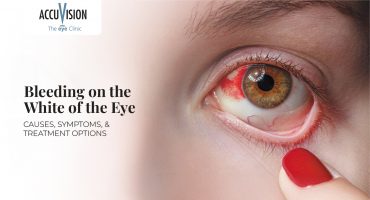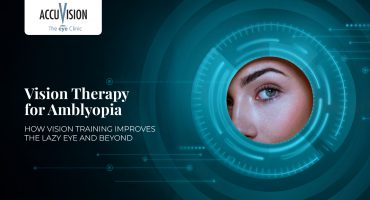- What Is Computer Vision Syndrome?
- How Screens Affect Your Eyes
- Common Triggers of Screen Time Eye Strain
- Digital Eye Strain Remedies: Practical Lifestyle Adjustments
- Long-Term Strategies for Protecting Your Eyes
- When to Seek Professional Help
- Conclusion
- FAQs:
- Reference:
How Screens Affect Your Eyes & How to Prevent Damage

In today’s digital age, screens have become an inescapable part of daily life. Whether working from home, attending online meetings, studying for exams, or unwinding with streaming services, the average person spends countless hours looking at digital devices. This increased reliance on technology has brought a growing concern to the forefront: screen time eye strain.
Understanding how screens impact your eyes is the first step towards protecting them. In this article, we’ll explore the science behind digital eye strain and provide evidence-based digital eye strain remedies that you can implement immediately to safeguard your vision.
Disclaimer: This article is for educational purposes only and should not be used for self-diagnosis. If you are experiencing vision problems or persistent symptoms, please consult a qualified eye care professional for personalised medical advice.
What Is Computer Vision Syndrome?
Computer Vision Syndrome (CVS), also referred to as digital eye strain, is a group of eye and vision-related problems resulting from prolonged use of computers, tablets, smartphones, and other digital screens. This condition affects people of all ages and occupations.
Common symptoms include persistent headaches, dry and irritated eyes, blurred or double vision, difficulty focusing, and neck or shoulder pain. Many people also experience increased light sensitivity and a burning sensation in the eyes. Research suggests that a significant number of people who work at computers experience some symptoms of CVS, making it one of the most common occupational health complaints.
The condition develops because viewing digital screens demands more from our visual system than reading printed materials. Our eyes must constantly refocus and realign when processing digital content, and the glare, contrast, and flicker of screens create additional challenges. The longer we use screens without adequate breaks, the more pronounced these symptoms become.
How Screens Affect Your Eyes
| Factor | How It Affects Your Eyes | Result |
|---|---|---|
| Eye Muscle Fatigue | Sustained contraction of ciliary muscles for near focus | Tired, achy eyes and difficulty maintaining clear vision |
| Reduced Blink Rate | Significantly fewer and incomplete blinks when using screens | Dry, gritty, irritated eyes with inadequate tear film |
| Blue Light Exposure | Short-wavelength light penetrates deep into the eye | Potential retinal strain and disrupted sleep patterns. |
| Poor Posture & Ergonomics | Hunching forward, incorrect screen positioning | Combined visual and musculoskeletal strain |
Common Triggers of Screen Time Eye Strain
Certain behaviours and environmental factors significantly worsen screen-related eye strain. Identifying these triggers allows for targeted interventions.
Screen Usage Habits:
- Extended, uninterrupted screen sessions without adequate breaks
- Working for hours without looking away
- Becoming absorbed in tasks and forgetting to rest the eyes
Environmental Lighting Issues:
- Rooms that are too bright, creating glare on screens
- Overly dim lighting forces the eyes to work harder
- Screens positioned near windows without appropriate blinds
- Poor contrast between bright screens and dark surroundings
Screen Characteristics:
- Small text sizes require intense focus
- Low-resolution displays or poor contrast ratios
- Outdated monitors with a visible flicker
Ergonomic Factors:
- Holding mobile devices too close to the face
- Positioning monitors at the wrong height or angle
- Incorrect viewing distances create unnecessary strain
Digital Eye Strain Remedies: Practical Lifestyle Adjustments
Implementing simple yet effective digital eye strain remedies can substantially reduce symptoms and improve comfort during screen use
The 20-20-20 Rule:
- Every 20 minutes, take a 20-second break
- Look at something at least 20 feet (approximately 6 metres) away
- Set a timer or use reminder apps to establish this habit
Conscious Blinking and Lubrication:
- Make a deliberate effort to blink fully and regularly
- Keep artificial tears or lubricating eye drops nearby
- Particularly helpful in air-conditioned or heated environments
Optimise Screen Settings:
- Adjust brightness to match ambient lighting levels
- Increase the text size for a more comfortable reading
- Use night mode or warm colour temperature settings during evening hours
Proper Ergonomics:
- Position screens at arm’s length (approximately 50 to 70 centimetres)
- Place monitors slightly below eye level for a natural downward gaze
- Ensure your chair provides proper back support
- Adjust desk height so forearms are parallel to the floor
Room Lighting Management:
- Position screens perpendicular to windows
- Use adjustable blinds or curtains to control natural light
- Keep ambient lighting roughly half as bright as typical office lighting
Long-Term Strategies for Protecting Your Eyes
Beyond immediate adjustments, adopting long-term protective strategies ensures sustained eye health despite continued screen use.
- Blue Light Filtering Solutions: Many people find relief using blue light filtering glasses or screen protectors, particularly for evening screen use. These reduce short-wavelength light exposure without significantly altering colour perception, potentially helping maintain natural sleep patterns.
- Regular Comprehensive Eye Examinations: Annual eye tests allow optometrists to detect early signs of vision problems that may be exacerbated by screen use, such as uncorrected refractive errors or early dry eye syndrome. Even small prescription changes can dramatically improve comfort during screen work.
- Vision Therapy and Eye Exercises: Some eye care professionals recommend vision therapy or specific eye exercises to strengthen focusing abilities. These targeted exercises can benefit those with certain types of binocular vision concerns for example convergence problems, but should only be done under professional guidance.
- Nutritional Support for Eye Health: Omega-3 fatty acids support healthy tear production and may reduce dry eye symptoms. Nutrients such as lutein and zeaxanthin accumulate in the retina and may help protect against light-induced damage. A balanced diet rich in leafy greens, oily fish, and colourful vegetables provides these beneficial compounds naturally
- Establish Screen-Free Time: Implementing screen-free periods, particularly before bed, benefits both eyes and overall health. Reading printed materials, engaging in outdoor activities, or practising hobbies without screens gives your visual system much-needed recovery time.
When to Seek Professional Help
While many cases of screen time eye strain respond well to lifestyle modifications, certain symptoms warrant professional evaluation.
Warning Signs Requiring Assessment:
- Persistent headaches that don’t improve with breaks
- Sudden vision changes, such as increased blurriness or double vision
- Difficulty focusing that doesn’t resolve with rest.
- Constant dryness despite using artificial tears
- Eye pain or discomfort interfering with daily activities
- Eye pain or discomfort interfering with daily activities
Conditions That May Worsen with Screen Time:
- Myopia progression, particularly in children and young adults
- Existing dry eye syndrome with symptoms exacerbated by screen use
- Binocular vision disorders cause more pronounced symptoms
Professional Support: Chronic dry eye syndrome may require prescription treatments beyond over-the-counter solutions. Eye care professionals can assess tear production and quality, recommending targeted therapies such as prescription eye drops or punctal plugs.
Conclusion
Managing screen time eye strain doesn’t require abandoning technology; rather, it involves implementing smart, evidence-based strategies that protect your eyes while maintaining productivity. The digital eye strain remedies discussed in this article offer practical ways to reduce discomfort and safeguard your vision.
Computer vision syndrome is increasingly common but highly manageable with the right approach. By understanding how screens affect your eyes and taking proactive steps, you can continue using digital devices comfortably. Regular eye examinations remain crucial for early detection of underlying issues and ensuring your vision correction is optimised for your lifestyle.
If you’re experiencing persistent symptoms despite making these adjustments, don’t wait for the problem to worsen. Book a consultation with an eye care specialist today to receive personalised advice and treatment options tailored to your individual needs.
This article was prepared by the clinical team at AccuVision UK, a leading eye care provider with over 23 years of experience in laser eye surgery and specialist ophthalmic care. With clinics in London, the Midlands, and Yorkshire, AccuVision’s expert team of ophthalmologists and optometrists ensures that every article is medically accurate, reviewed for reliability, and aligned with best practices in eye health.
FAQs:
1. What is computer vision syndrome, and how is it different from general eye fatigue?
Computer vision syndrome (CVS), or digital eye strain, is caused by prolonged screen use Symptoms include headaches, dry eyes, and blurred vision Unlike general tiredness, CVS is specifically linked to digital devices
2. How many hours of screen time can cause eye strain?
Eye strain can occur after just a few hours without breaks Even moderate use can trigger symptoms if lighting, posture, and blinking aren’t managed
3. Do blue light glasses really help with digital eye strain?
Blue light glasses may reduce glare and improve comfort They don’t cure CVS but work best alongside other remedies Combine with the 20-20-20 rule and proper ergonomics for best results
4. Can children develop computer vision syndrome from too much screen use?
Yes, children can develop CVS due to extended screen exposure Watch for signs like squinting, eye rubbing, or headaches Encourage regular breaks and screen-free activities
5. When should I see a doctor about screen time eye strain?
Consult an eye care practitioner if symptoms persist despite home remedies Symptoms include blurred vision, headaches, or persistent dryness An eye exam can rule out underlying issues and provide tailored treatment
Reference:
Sheppard, A.L. & Wolffsohn, J.S. (2018) ‘Digital eye strain: prevalence, measurement and amelioration’, BMJ Open Ophthalmology, 3(1), e000146. doi:10.1136/bmjophth-2018-000146.








